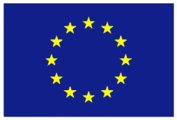Applicants must not have resided or carried out their main activity in Germany for more than 12 months in the 3 years immediately before the date of application
This process will remove any unwanted solvents from the final long acting suspension, with no detrimental effects on the physicochemical properties of the nanosuspension. The mechanistic understanding of long acting suspension production generated by ESR1 and ESR2 and the thermodynamic modelling of ESR3 will inform this project. The ESR on this project will determine the effect of solvent switch on nanocrystal formation (in collaboration with ESR1). A combined membrane-based production process for producing LA suspensions with a solvent/antisolvent switch will be developed. Crystal formation and solvent switch is intended to be integrated in one apparatus via diafiltration. The optimal membrane for a diafiltration process will be identified by HTS and conventional membrane screenings between solvent/water and commercially-available membranes. Process requirements like feed solvent ratios, API particle loadings and the final solvent content following ICH-guideline Q3C(R6) will be defined so that the process design follows these constraints. Membrane performance evaluation via permeation rates and selectivities of different membranes under different process conditions (pressures and temperatures). The influence of excipients and nanocrystals on the membrane performance will be taken into account. Based on the membrane characterization, the process will be designed with respect to flux, feed rates, membrane selectivities, membrane size, and flow directions. Additionally, operational aspects required for a successful technical realization (e.g. expected lifetime of the membranes, membrane stability and cleaning intervals) will be elucidated.


This project has received funding from the European Union’s Horizon 2020 research and innovation programme under the Marie Skłodowska-Curie grant agreement No 861278